This guide is just what you need if finding the best TV under $700 is a critical issue for you right now. We’ve compiled a list of the best 4K Smart LED TVs with various screen sizes now available on the market so you can find one that suits your needs.
Television technology advances rapidly, and today’s televisions are as sophisticated as they’ve ever been. They have fully functional Internet browsers, app stores, and downloadable applications that let you watch TV shows, videos, and movies online.
Continue reading to find out which is the best TV under $700 to meet all of your requirements. Given the wide variety of TV brands available, we recommend selecting models from reputable, well-known brands.
Buying a television is a difficult task because there are many variables to consider, such as the TV’s size, whether or not to get a smart TV, the audio output, etc. Furthermore, the display quality, the type of panel used, the brightness, and color reproduction must all be considered.
Television prices have come down dramatically in recent years. The days of spending thousands of dollars on a 4K television are long gone. For a few hundred dollars, you can get an excellent best Tv under 700 dollars with decent high dynamic range (HDR) compatibility and many smart TV apps. Without breaking the bank, big-screen alternatives up to 65 inches are also available.
This approach may be far more challenging if you’re on a limited budget. As a result of our rigorous research and testing, we’ve developed this list of the best TVs under $700.
The buying guide on best TV under $700:
We will help you improve your viewing experience. Many TVs are on the market, but the best TV is for your room and budget. Of course, there are always trade-offs to consider when buying a TV on a budget.
A true home theatre experience is still expensive, but choosing an entry-level TV doesn’t mean you have to be content with poor image quality, a small screen, or a display without the latest streaming services.
Selecting size
The larger, the better. Once upon a time, the scale of the own circle of relatives couch dictated the scale of the television. However, today’s televisions are rewriting all the rules, so that’s now not the case.
Any expert evaluation of current 4K TVs will inform you the identical thing: larger is better. If you move for a too small, you may be disappointed. Today, televisions are excellent not only in image quality but also in design.
We’ve evolved from a large, flashy black box that takes up space and collides with everything to a surprisingly thin and beautifully crafted TV that blends into the surroundings and is 32 to 100 inches in size.
HDR compatible
This is different from the HDR function of smartphone cameras and the so-called “melodrama” effect. HDR allows the camera to capture multiple exposures at once and blend them to increase contrast on the phone. HDR on TV creates additional contrast within existing pixels and extends contrast and color for a more natural, accurate, and immersive experience.
With HDR, colors stay true to the shape of your TV. Televisions without HDR cannot faithfully reproduce some colors. What HDR offers on TV is truly incredible and worth further investigation.
Resolution of television
4K is four times better than the old HD standard, and four times better is not a subtle upgrade. It’s a sacred mackerel upgrade for your face, especially if you have a lovely 4K TV. There isn’t much 4K content available, but all stripe content creators are preparing to release almost anything in 4K. And your new 4K TV is ready for future challenges. But wait, there’s more.
Thanks to new upscaling technology, the new 4K TV will make standard HD video look even better. Thanks to the new upscaling technology that attractively converts 1080P to 4K by increasing the pixel density.
Processor and design
Every designer has a distinct style of design. But on the other side, larger displays with 4K and 8K resolutions will have lower borders, slimmer layouts, and lighter options. Even notch-less TVs and TVs appear to be a photo frames when not in use.
A processor is included inside every tv that processes data from your cable modem, satellite antenna, network, or another source for presentation on display. Greater TV’s photo frames computational power tends to improve. It can lead to a more fluid picture, quicker streaming material downloads, and reduced latency.
Brightness and image quality
TV makers describe brightness in several ways, but it always boils down to peak brightness. Look for the number of nits, independent of the technology used to generate television. The greater the number, the brighter the screen. This is critical if you’re looking for a TV to place in a bright environment.
You’ll come across a range of words associated with visual perform its function depending on the company you’re checking at. Samsung’s QLED TVs offer exceptional color and clarity in small designs, whilst LG’s NanoCell technology offers high magnification, various color schemes, and superb contrast.
UHD and Qled
Picking the right TV may be tough as many functions, display types, marketing gimmicks, technology, and specs to consider. Understanding the differences between UHD and QLED displays might save you money. Features and technology are marketed differently by other television companies.
These are two terms that may be seen on most Samsung televisions. To begin with, UHD and QLED are typically marketed as individual characteristics, and they are not. The first is quality, and the second is technical progress.
LED vs OLED
While these titles may sound very similar, each uses a different technology to deliver a different TV visual experience within each set of benefits and drawbacks. The most common and older of three LED backlighting technologies have been utilized in LCD televisions for more than a decade. Because they’re the cheapest to produce, you’ll find these in more budget-friendly televisions.
They feature excellent coloring and brightness levels and are resistant to burn-in. LEDs are still used to backlight an LCD with QLED technology. It still filters the light using a layer of nanomaterials between the LED and the LCD screen, giving more vibrant and accurate colors. It’s exclusively found on Samsung TVs. However, other companies are beginning to adopt it.
Connectivity
Look for HDMI input, USB access points, stereo ports, wire receivers, Network cards, and other vital ports. Examine your WiFi and Bluetooth connectivity choices, as well as such connections.
You can effortlessly control numerous operations using the cellular telephone by linking through Bluetooth or WiFi. Numerous system components are available on TVs, and colored connections on the rear or sides of screens are standard.
HDMI seems to be the only connection you need to be worried about. HDMI is the industrial interface for connecting media to the tv, such as video services, Blu-ray discs, game systems, or even Computers.
HDMI includes the ports’ look and the many functions they may offer. With a few exclusions, you don’t have to bother upgrading to HDMI 2.1. The capabilities listed above, including VRR, are supported by HDMI 2.0b.
Audio
We also need the widest sound hearing ranges possible so that everyone can watch TV while having fun. As acoustical technology develops, producers do everything to provide slightly elevated audio.
If you want to make a sound, the cost will be more, but it will stay longer. Excellent audio quality in a pleasant environment cannot be emphasized. The device is also interoperable with a loudspeaker and additional speakers, ensuring high-quality TV sound.
Also Read: Best 19-Inch TV
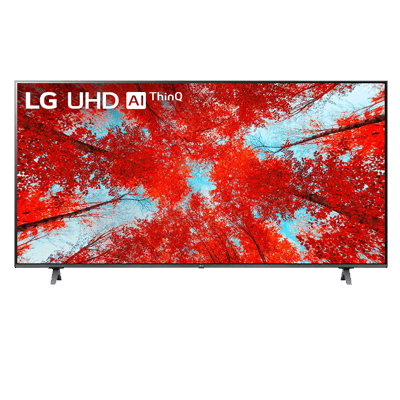
PROS
Reasons to Avoid
The LG UQ 90 2022 is an excellent 4k TV overall. Located at the top of LG’s NanoCell lineup, it is a slight improvement over LG NANO90 2020. Bright enough to fight glare, it provides impressive reflections and is suitable for bright rooms.
Gamers should appreciate features such as 120Hz panels, HDMI 2.1 inputs, and variable refresh rate (VRR) support. In addition, the response time is fast, and the input delay of the game is small.
IPS panels have a fairly wide viewing angle, but they are not as good as most IPS panels because the image looks dark when viewed from a certain angle. It also has low native contrast, black looks grey, and local dimming suppresses bright highlights, which does not improve image quality. It offers a fairly wide viewing angle, impressive reflection processing, and excellent peak brightness, which is ideal for watching shows and sports.
Thanks to HDMI 2.1 and VRR support, low input lag, and fast response times, it’s also great for games. Unfortunately, watching a movie in both SDR and HDR is fine. This is because the contrast ratio is low, and black looks grey.
Also, the full array local dimming feature does not improve image quality, but it reduces performance and highlights. Thankfully, TVs can easily upscale low-definition content and remove 24p breaks from movies from any source.

PROS
CONS
The Hisense 75A6G is a basic entry-level 4k TV. Sizes vary from 43 to 85 inches, and the exact specifications vary by size and can be a bit confusing. The device we tested features an IPS panel with a wide viewing angle but low contrast.
It also has sub-average black uniformity and no local dimming function, making it unsuitable for dark rooms. Some of the sizes use VA display, and the high contrast should improve performance in dark rooms, but they do not yet have local dimming.
The interface is extremely easy to use, and you have a wide selection of smart apps. Also, the input delay is very low even when not in game mode, but the response time is relatively slow, making it a gaming TV. Overall, the Hisense A6G is a great TV.
A wide viewing angle and proper reflection treatment are suitable for watching daytime shows, but they may not be bright enough to overcome the glare of a bright room. Despite the small input lag, it isn’t very unusual for the game.
Response time is slow, and there are no advanced game features. If you love watching movies in the dark, stay away from models with IPS panels. It has a low contrast ratio, sub-average black uniformity, and no local dimming function.
The contrast ratio is low, black appears grey in dark rooms, and the black uniformity of the tested units is below average. Neither can be improved because there is no local dimming function.
On the other hand, you can properly upscale low-resolution content and remove stutter from native apps or native 24p sources. The size of the VA panel should be much better with the film because of the high contrast and probably the high uniformity of black.
Also Read: Best 55-inch TV under 600 Dollars
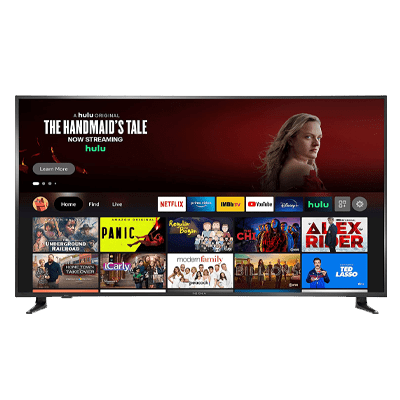
PROS
CONS
The Insignia NS75F301NA22 F30 is an entry-level 4k TV with quantum dot panels that offer a wider range of colours than traditional LED-backlit TVs. This is a very basic TV with a few additional features.
Runs the latest version of Amazon’s Fire TV smart interface with many streaming apps and user-friendly layouts. The Quantum Dot panel provides an excellent wide colour gamut, but unfortunately, the colours cannot be accurately represented because the saturated colours are so supersaturated.
VA panels are suitable for dark rooms because they provide excellent contrast and black uniformity, but like most low-cost TVs, they do not have local dimming to improve contrast.
With the right peak brightness and the good reflections in the SDR, it’s also suitable for moderately bright rooms, but it can’t overcome bright glare. Also, because the viewing angle is narrow, the image deteriorates when it is off the centre, making it unsuitable for a wide seating arrangement.
The Insignia F30 QLED is an excellent TV overall. Good contrast and good black uniformity make it suitable for watching movies and TV shows in dark rooms, but there is no local dimming to improve the contrast. It provides a good gaming experience with low input lag and good response time but lacks advanced gaming features such as variable refresh rate support.
It supports HDR and can display a wide colour gamut, but it’s not bright enough to bring out small highlights, so it adds very little HDR overall. Chroma 4: 4: 4 signals cannot be displayed correctly, and the text looks blurry, making it unsuitable for use on desktop PCs.
Low input lag and amazing response times provide a responsive desktop experience. It also has the right reflections, so glare is not an issue in a reasonably bright room.
Unfortunately, the text on the desktop looks blurry because the Chroma 4: 4: 4 signal cannot be displayed correctly. This is fine for games from a PC, but it is not suitable for desktop use due to this limitation.
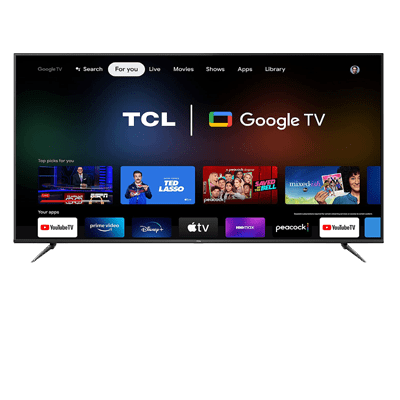
PROS
CONS
The TCL4 Series / 75S446 2021 is an entry-level 4k TV. This is a TCL 4 series simple TV, including TCL 4 series 2020 and TCL 4 series / S434 Android 2020. The difference between each model is the smart platform on sale and the panel type.
Best Buy Exclusive 4 Series 2021 features Google TV, which is easy to use and has a variety of apps that can be downloaded from the Google Play store. Unlike other models, the tested 65-inch model has a wide viewing angle and low contrast IPS-like panel, but there are also variations with a high contrast VA panel at the expense of the viewing angle.
However, the image quality is not good because it doesn’t get bright, so glare is an issue in very bright rooms, and HDR doesn’t show highlights. It also lacks additional features such as local dimming, Dolby Vision, and HDR10 + support.
It cannot display a wide colour gamut, so it usually doesn’t provide a satisfying experience when streaming content in HDR. There is no problem with the TCL4 series as a whole.
Thanks to the wide viewing angle of the panel, like IPS, it works well with wide seating arrangements, B. I watch TV programs and sports. But the panel may differ depending on the size, and the viewing angle may be poor. It is suitable for games because it has little input delay.
However, the response time is quite slow, and there are no additional gaming features. Unfortunately, watching a movie in SDR or HDR in a dark room is a shame. The IPS-like panel has a low contrast ratio and no local dimming, so black looks grey.
There are several variations with a VA panel and a narrow viewing angle. If you want it in a room with little lighting, the reflection treatment is excellent, but the peak brightness is disappointing. Also, fast-paced content looks blurry because it only has adequate response times.
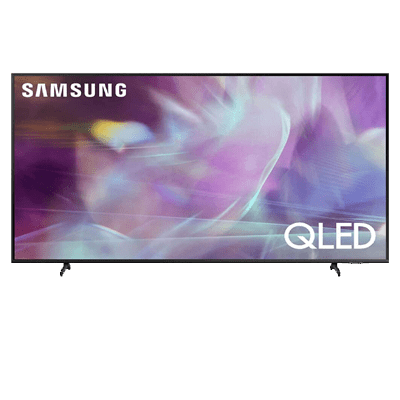
PROS
CONS
If you’re looking for the greatest smart TV brands with the most advanced features, the Samsung Q60 Series is the finest option! Because of the DCI-P3 color space, this outstanding technology displays a 100% color volume to captivate users.
The quantum dot function allows you to enjoy a lifelike color experience in millions of colors. With a balance of cold and warm LED backlights, you won’t worry about eye fatigue or other concerns with this Samsung TV.
In addition, the contrast ratio has been improved. Even if we exclude any technical features, the sleek, air-slim appearance it exhibits persuades people to purchase this smart TV for under 700 dollars.
The size of the TV is a noteworthy characteristic; it is significantly larger than most other televisions. Furthermore, the Quantum 4K Processor Lite is a powerful feature that improves sound quality and picture clarity.
The QLED Q60A series’ Super Ultrawide GameView is one of the coolest features we’ve seen thus far. It has a 21:9 to 32:9 aspect ratio, expanding your viewing angle and giving you a cinematic experience! It contains gaming options that you can alter according to your needs, such as FPS, input latency, wireless headset, HDR, etc.
Furthermore, the quicker technologies allow the TV to react swiftly to your gameplay, resulting in a smooth experience with little motion blur. Last but not least, the built-in Alexa feature made it easy for people to manage and operate their smart TVs using their mobile devices. Overall, this QLED TV with a 60 Hz refresh rate is one of our favorites.
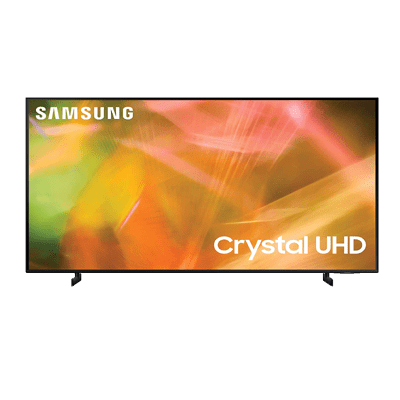
PROS
CONS
From 2020, the Samsung AU8000 will replace the Samsung TU8000 as an entry-level 4k TV. It’s a basic model without features like variable refresh rate (VRR) or HDMI 2.1 support, but that’s expected from a low-cost alternative. It boasts a VA-style panel with a high native contrast ratio that performs well in dark settings. However, there is no local dimming feature to boost black levels.
For an entry-level model, the TV is a little elegant. Compared to the Samsung TU8000 from 2020, it has new feet that sit flat against the table. It boasts a simple design with narrow bezels that look good in any setting.
The build quality of this television is satisfactory. It’s made of a nice-feeling plastic, and the whole item is well-constructed with no evident flaws. However, the rear panel flexes a lot around the center and inputs, which is apparent when plugging in HDMI cables.
It improves on its predecessor in a few areas, notably outstanding reflection handling, so it’s not a bad pick for a room with a few lights, even if it doesn’t get extremely bright. Unfortunately, it is not recommended for large seating configurations due to its narrow viewing angles, which cause the image to appear washed out.
The Samsung AU8000 is a good all-around camera. Because of its high native contrast ratio, it’s fine for watching movies, although it lacks a local dimming feature to boost contrast.
Because of its excellent reflection management, it’s suitable for watching TV shows and sports, but it’s not ideal for a large seating arrangement because of its restricted viewing angles.
It lacks gaming features and has a slow response time, making motion appear hazy, but it does offer a low input lag, allowing for a responsive gaming experience. Unfortunately, it lacks a wide color gamut for HDR video and isn’t bright enough to bring out highlights.
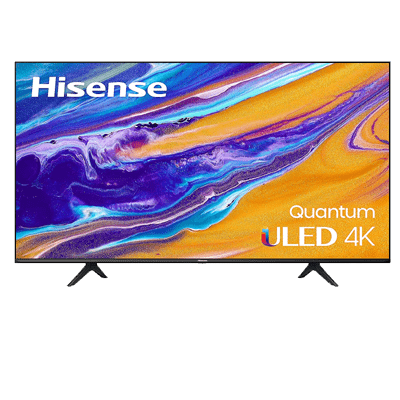
PROS
CONS
The Hisense U6G may lack some of the frills seen on pricier models, but it still delivers excellent image quality for a TV in this price range. Support for Dolby Vision and HDR10+, as well as additional HDR alternatives, are among those featured.
The U6G also has a brightness range of up to 600 nits, which is adequate for most circumstances. While the panels on this TV aren’t the most consistent, you’d be hard-pressed to spot blooming or blotchy image quality under normal viewing conditions.
The Hisense U6G is equipped with Google’s Android TV, becoming more responsive as televisions become more powerful. It’s a good solution in this case. Although the Hisense U6G is at the lower end of its redesigned TV portfolio, it nevertheless has a good design.
It doesn’t have the same luxury appearance as a much more costly TV, but the bezels are still narrow, the legs are sleek and attractive, and the TV looks fine overall. Everything is constructed of black or dark grey materials, including bezels, legs, etc. It looks great.
You’ll find all of your ports and connections on the back of the TV. Four HDMI ports are available on the TV, three of which are side-facing and one of which is back-facing. There’s also an optical audio output, two USB power connectors, an Ethernet port, and an AV.
The design of the remote is nice, although it is a little old-fashioned. The U6remote G’s is a little daunting in a world of stripped-down Apple TV and Google Chromecast remotes.
Full channel control, software controls, Google Assistant controls, quick-access buttons for six streaming providers, volume controls, and so on are all included. The Hisense U6G and its remote have a good design. This is a budget TV, so don’t expect a high-end design – but the available one will still look nice in most houses.

PROS
CONS
LG is another leading brand that is showcasing its cutting-edge technologies, including this 65-inch smart TV. The LG 65NANO75UPA is a 4K television with ThinQ AI technology for the finest gaming experience.
The LG TV’s 4K features ensure that the viewer may enjoy every vivid colour with optimal contrast and flawless visual detail. Were you looking for a quad-core television? The LG NanoCell TV filters and refines colour by removing pollutants from RGB wavelengths using nanoparticles, our own exclusive Nanotechnology.
This means that only pure, realistic colors will be presented on the screen. As a result, your material will come to life with a more bright, realistic image. It has fantastic remote quality. With the new Magic Remote, you can spend more time watching.
With point, click, and scroll, voice control, and content provider button shortcuts, you’ll discover your material faster than ever. When it comes to the processor, this smart UHD TV shines, offering a clear and smooth viewing experience with an excellent blend of blacks.
It also has TruMotion technology pre-installed, which sharpens video details by eliminating blurriness with nearly 120 frames per second. The LG home screen has been redesigned to provide personalized content recommendations, easier access to favorites, and control of connected devices all in one location.
The fantastic and wide viewing angles allow users to have the fastest response time possible with the least input lag. Not only that, but the Google Assistant and Alexa compatibility feature allows you to configure and operate your smart TV from your phone.
Similarly, the excellent Roku TV feature allows users to access various online streaming services, including several channels and nearly 500,000 movies. Now is the best moment to purchase this work of art precisely tailored for your house via your smartphone, so everything is just a click away!
The simple voice control system connects to your android or iOS devices via Amazon Alexa and Apple AirPlay. Above all, the company’s relatively low pricing persuades users to buy it without hesitation.
Also Read: Best TV for N64
Conclusion
This guide has discussed everything you need to know about the best tv under $700. The buyer’s guide can include various other elements, such as image quality, warranty period, processing technology, etc. Still, it all relies on the individual purchasing the smart TV.
Before purchasing a top-of-the-line television, you can examine various features and factors to ensure that you do not have any regrets. The new list, which includes all of the specifics, includes a variety of screen sizes and elegant designs that are all beauties in their own right.
